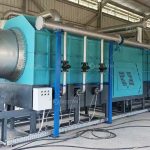Advantages of Charcoal Making Machine for Biomass Recycling
Biomass recycling has become an essential practice in advancing circular economy principles and reducing environmental degradation. Among the available technologies, the charcoal making machine offers a systematic approach to transform agricultural residues, forestry byproducts, and organic waste into renewable energy and industrial feedstock. By converting low-value biomass into high-demand charcoal, this equipment not only supports waste reduction but also fosters economic resilience.
Resource Valorization
One of the key advantages of charcoal production technology lies in resource valorization. Agricultural byproducts such as rice husks, coconut shells, wood chips, and sawdust are often discarded or openly burned, creating environmental hazards. With specialized systems like a sawdust briquette charcoal making machine, these materials are converted into dense, energy-rich briquettes that serve as substitutes for traditional fuels. A rice husk carbonizer further demonstrates the versatility of this technology by processing lightweight agricultural residue into biochar suitable for soil amendment and carbon sequestration.

Energy Efficiency and Self-Sustaining Operation
Modern biomass pyrolysis equipment is engineered for operational efficiency. During the pyrolysis process, syngas is released and reused to fuel the reactor, minimizing the need for external energy inputs. This self-sustaining mechanism lowers operating costs while reducing greenhouse gas emissions. In regions with limited energy infrastructure, the ability to generate internal heat provides a critical advantage, ensuring continuous production without reliance on fossil fuels.

Economic Feasibility and Market Potential
Charcoal derived from biomass has diverse applications in metallurgy, barbecue fuel markets, and industrial heating. Steady demand creates consistent revenue streams for operators. At the same time, factors such as coconut shell charcoal making machine price directly influence adoption rates, particularly in developing economies where agricultural residues are abundant. Although initial investment varies by configuration and capacity, the profitability is reinforced by the availability of low-cost raw materials and strong market demand for renewable charcoal.
Environmental Protection
Charcoal making machines like rice husk carbonizer contribute significantly to environmental protection. By preventing open burning of biomass, they reduce the release of particulate matter and harmful emissions. The resulting biochar has additional environmental value, improving soil fertility, enhancing water retention, and acting as a long-term carbon sink. This dual function—pollution reduction and carbon sequestration—positions biomass recycling as a climate-positive practice.
Adaptability Across Feedstocks
Another notable strength of this technology is its adaptability. Equipment can process a wide range of feedstocks, from coconut shells and bamboo to rice husks and forestry waste. This flexibility allows industries and rural communities to tailor operations to locally available materials, ensuring continuous utilization of biomass and reducing transportation costs.
Conclusion
The advantages of charcoal making machines in biomass recycling extend beyond waste reduction. They convert underutilized residues into energy-rich resources, enhance operational efficiency through self-sustaining systems, and deliver measurable environmental benefits. With innovations ranging from sawdust briquette charcoal making machine to rice husk carbonizer, the technology demonstrates versatility across feedstocks. While considerations such as coconut shell charcoal making machine price shape investment decisions, the broader value lies in fostering a sustainable and economically viable approach to biomass recycling.
